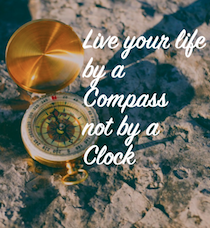What should I do now I’ve completed my RYA Powerboat Level 2 Course?
What next after a Powerboat Level 2 Course?
Having just had one of our busiest months for Level 2 Powerboat Courses, we felt it was time to talk about the next steps. We sincerely hope that if you undertook the course with us that you had a great time. We hope you want to carry on your boating. The journey will now be different for each person but the main priorities:
1. Getting afloat. Is it practical for you to get out and start practising afloat now or within the next few weeks?
2. Stuck on Shore. Think back over your course and consider whether there are any aspects of the theory side you’d like to look at in more detail and develop further.
Getting afloat
If you have the opportunity to get afloat, it really is important to get out there and start practising. Use a boat whilst the knowledge is fresh and the confidence high. You passed the course, you have the ability to get out there so seize the chance. Think back to day one of your course – what was one of the first things you talked about? Conditions and Planning??
First of all make sure the boat you plan to use is ready. Has it been serviced, is the trailer road ready, is all the kit on board? Have you organised all the personal kit like waterproofs and lifejackets, don’t forget navigation charts? Have you thought about where to launch or if on a mooring whether there are limited times due to tides or locks. Plan carefully, it will make your first trip not only safer, but also more enjoyable.
If you need to borrow a boat look into hire possibilities – a really good start if you’re local is with our friends at Poole Boat Hire. They are limited to the harbour but that still provides plenty of space to explore. Its an hour and a half each way to Wareham for example! If you want to borrow further afield or hire a RIB then contact us for advice. The bonus of hiring is there should be back up in case of breakdown. If its your own boat perhaps consider SeaStart membership.
Check and check again:
Check local information and organise a plan for your trip. Don’t forget insurance and harbour dues if its your own boat! Why not refresh your mind with a read through of your Start Powerboating Book? Have a look at the Student Page on our website for useful resources. If you’re a member of a sailing club or similar why not ask if you can get afloat on the safety boat? great idea to take along an experienced helm as crew?
Plan the day:
Next think about the actual day. Who is going with you – are they trained, do they need a briefing or any equipment providing? Consider on your first trip who is going with you. If you’ve a friend or family member who is unsure of boating perhaps delay their attendance until a later trip when you’ve a little more experience. Instead take along a couple of people who have boating experience or similar. Plan just a short trip the first time – build up as your experience progresses.
Then check the conditions, forecasts and tides. If it seems a bit ‘iffy’ listen to your instincts and delay for a nice day, however disappointing that might be. Don’t forget to check several sources of info and interpret the information you’ve given. Ask around for local information if needed. Don’t forget to leave a shore side contact and set up RYA SafeTrx
If you do decide to go out, when you hop on board double check the boat. Remember to set SafeTrx running & think about the prestart checks and engines checks. Don’t forget your killcord and before releasing the lines just think about wind and tide as you learnt on your course. Enjoy and stay safe!
Stuck on shore – further learning & course options
If you are unable to get afloat immediately why not have a read of your coursebook Start Powerboating and reflect on the parts of your course you’d like to develop further. The usual next steps for study include: VHF Marine Radio Course, Navigation Training or studying books such as the Powerboat Handbook to understand and refine your practical skills.
VHF
Don’t forget if you’re on coastal waters we advise you carry a VHF whether it’s a portable, handheld or a fixed radio set. To operate the VHF you are required to have an ‘Authority to Operate’. (In an emergency please just use the set!). This qualification can be undertaken as either a one day classroom course or you can study online and then arrange a convenient time for a short assessment with us. Initially we find some reluctance to take the radio course. However, we have yet to find a student who hasn’t enjoyed and taken away a lot from the course. It’s underrated and our most commonly received feedback is ‘didn’t expect to enjoy this but had a great day and learnt lots!’
What to expect from a VHF course:
We know its tough to sit in a classroom but we do our best to make the course as relaxed and informal as possible. In order to keep you engaged we use lots of interactive learning and have training radios to practice on. We practice Mayday & PanPan calls along with which channels to use, how to set up the radio to be able to hear clearly and we look at the fabulous DSC functions. If you have any questions about your own radio we have a great contact at Icom who is fab at providing answers.
There is a short assessment at the end of the day but please don’t let this put you off attending. We teach in small groups, are happy to provide bespoke courses and if you want to delay the assessment for another day just let us know at time of booking. Tell us what works for you.
RYA Essential Navigation & Seamanship
When you attended your Level 2 Powerboat Course it was probably the first time you’d considered navigation and safety kit. Within a two day course we only have time to introduce to information on passage planning and pilotage, buoys and collision regulations. The Essential Navigation course is a fab short course that starts to develop the concepts further. It introduce a few new techniques. It is usually taken online in your own time – there is no final ‘test’. Instead you complete exercises as you progress and on successful completion you receive an RYA Certificate.
If you prefer, we can arrange to run these courses in the classroom over two days. Whether its an online course or classroom course you choose, you will receive a study pack. This includes practice charts, exercises and a plotter/set of dividers like you used on your PB2 course. It a brilliant base for those who later choose to go and study our RYA Dayskipper or Yachtmaster Theory Courses.
Summary
Don’t forget we also offer short Powerboat Refresher Sessions on the RIB or can offer bespoke training on either our boat or your own. Just contact us to have a chat.
If after your Powerboat Level 2 (PB2) Course you decided to progress onto a different style of boat, perhaps a hard sided boat, a motorboat or small motor cruiser then think about some bespoke training or perhaps even look towards the Dayskipper Practical course if you’ve decide to creep into bigger boats. Remember all boats handle differently and its important to be confident and safe afloat.
We hope the information here provides you with just a few ideas of how to make the most from your Powerboat Level 2 Course and progress your boating. Please just give us a call with any questions. Whether it’s a simple reminder or you want to book further training we’re always happy to talk. It is impossible to cover all the reminders from a two day course in just a short blog piece but hopefully this has given you a few reminders! We love to hear your progress. Please drop us a line or join our social media channels to tell us your news.
Sarah & Dom
www.dorsetmarinetraining.co.uk
01202 901267
enquiries@dorsetmarinetraining.co.uk











